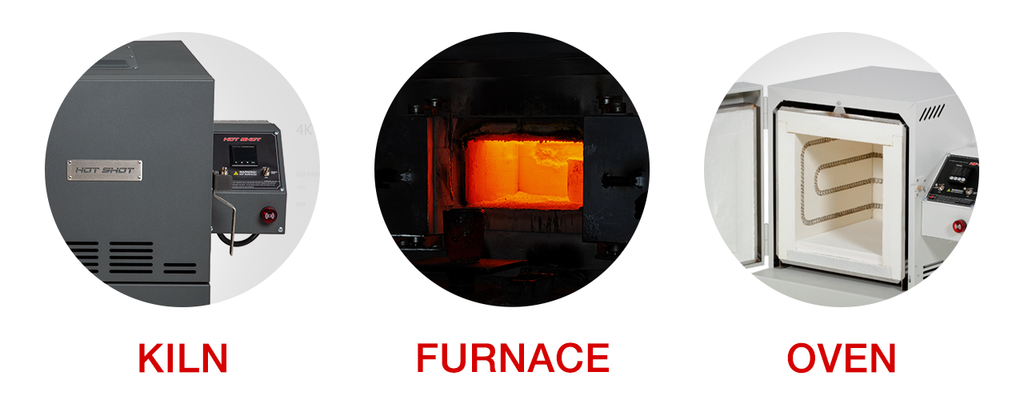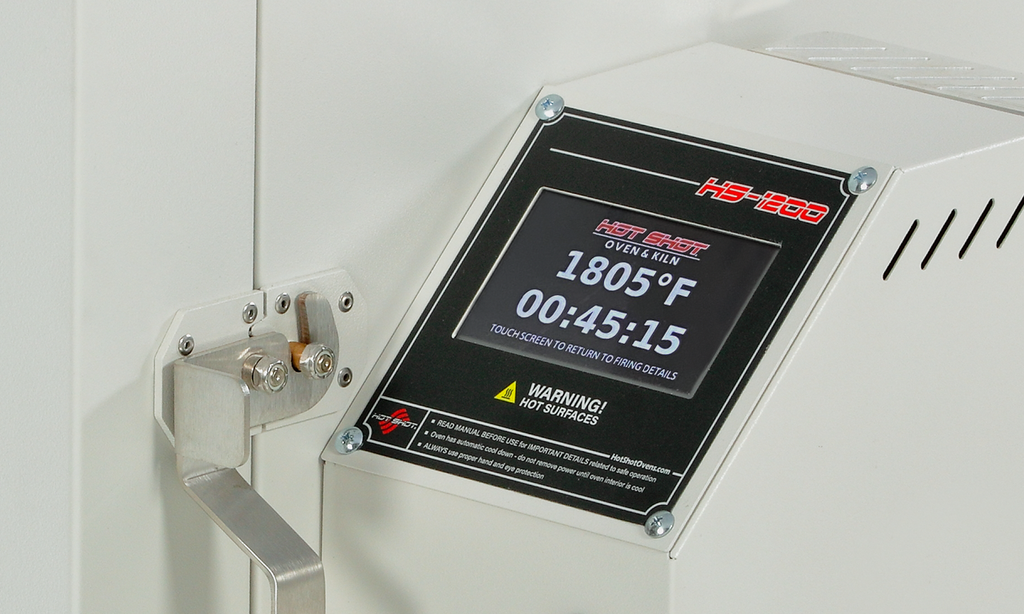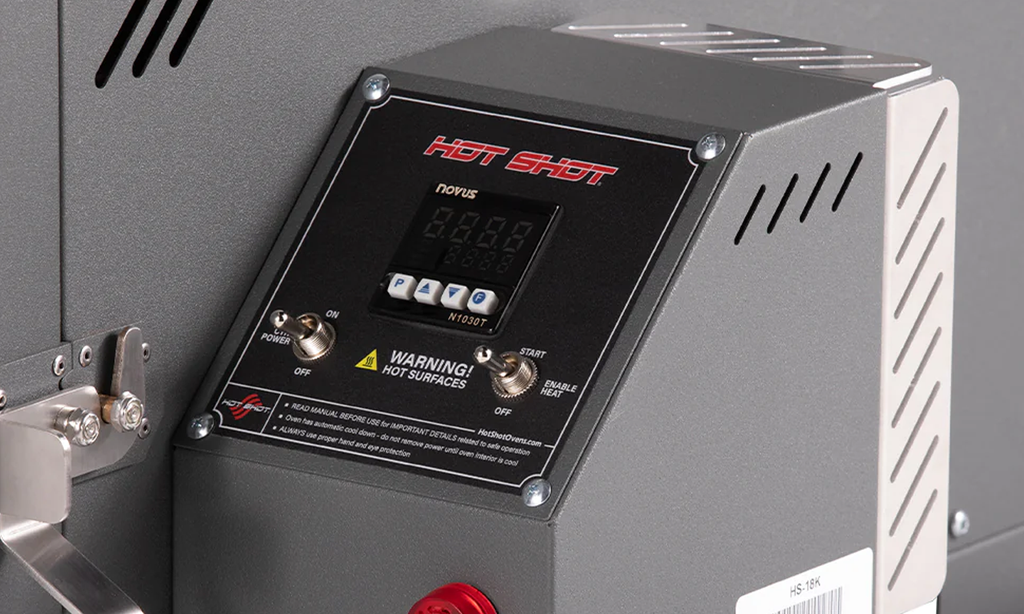
Knife Making Kiln Buyers Guide: What You Need to Know
Are you serious about doing your own knife heat treating? Great idea! Want to get consistent, quality results? A good kiln will give you a big boost.
So, now’s the time to do your due diligence. Mistakes can be costly.
In this article, we’ll dive into the world of knife-making kilns, exploring different types, sizes, heating capacities, and other considerations. Read on to gain the essential knowledge you need to make an informed decision about your important kiln investment.
What Is the Difference Between a Kiln, Furnace, and Oven?

In discussions about heat treating knives, you might see any and all of these terms thrown around. And while a kiln, furnace, and oven are similar in many ways, they also have key distinctions. Let’s take a closer look.
Kiln
A knife kiln is a closed chamber that uses some heat source—such as a gas-fueled flame or electric heating elements—to reach high temperatures inside.
In addition to that high temperature capacity (more on that in a bit), kilns offer several advantages for knife heat treating, including:
- Precise temperature control
- Uniform heating throughout the chamber
- Options for atmospheric control and airflow
- Larger capacity firing chamber compared to a typical household oven
For serious knife makers creating small to medium-sized pieces, a dedicated heat treating kiln is a smart choice. If you want to make something much larger, you might want to consider a …
Furnace
Here, we’re not talking about the furnace you use to heat your home.
Rather, we’re looking at a heat treating furnace—a larger, enclosed space that uses a heat source to reach a very high temperature inside.
It’s still used for heat treating. But it’s better suited to bigger pieces or industrial batch processing. For most knife makers, a furnace is overkill in both size and power.
Oven
An oven is like a kiln, in that it’s a closed chamber that heats to a high temperature.
But an oven may not be able to heat as high and usually lacks the precise temperature control and uniform heating of a kiln.
Can you use it for heat treating—like, can you temper steel in an oven? In some cases, yes. But for the most complete heat treating capabilities and precision, you should get a kiln.
How Big Does Your Knife-Making Kiln Need to Be?
The question of size is one of the first to consider for your kiln.
And it comes down to this: How big are the pieces you want to make? Are you envisioning crafting delicate pocket knives? Or do you aspire to make larger blades, such as swords or machetes?
In general, we recommend going for a slightly larger kiln than you think you’ll need. Why? Because having a bit of extra space can offer invaluable flexibility to experiment and grow.
You can always heat treat a small knife in a larger kiln. But if you decide to try making a broadsword, it doesn’t work the other way around.
This foresight can save you from the frustration of outgrowing your equipment and needing to invest in an upgrade sooner than anticipated.
For hobbyist knife-makers, a kiln with an interior 18 inches deep (such as the Hot Shot HS18K) will accommodate a lot of needs. This size allows you to comfortably fit standard-sized knives for heat treatment without occupying too much space in your workshop. Or you can level up to one that goes 24 inches deep (example: Hot Shot HS24K) to cover more possibilities.
How Hot Does Your Kiln Need to Get?

Here’s the main reason you can’t heat treat knives in your kitchen oven.
The interior needs to be able to reach a uniform temperature of at least 1,500 °F—or plenty hotter, depending on the type(s) of steel you work with.
- 1095 spring steel: 1,525 °F
- O1 tool steel: 1,600 °F
- D2 steel: 1,850 °F
- 440C stainless: 1,950 °F
As with sizing, it makes sense to go a bit higher than you think you need for flexibility.
Is the Oven You Need 120V or 240V?

Now it’s time to weigh your power requirements.
The standard household outlet supplies 120 volts. So you may be thinking about a smaller 120V electric kiln.
But this choice may lack the power needed for efficient heat treatment, especially for larger or thicker materials commonly used in knife-making. It will take longer to heat up, as well.
Yes, a 240V kiln will need a dedicated 240V outlet. There’s some cost and inconvenience to getting a 240V outlet installed (if you don’t have one already). But the benefits likely outweigh these issues. A 240V kiln offers increased power and efficiency, allowing for faster heat-up times and more precise temperature control.
Investing in a more powerful kiln not only ensures optimal performance but also future-proofs your equipment for potential growth in your hobby.
What Type of Controller Do You Want?

You need some way to set the temperature in your kiln, of course. But you can do a lot more and get a lot more data with today’s controllers.
You may encounter a variety of controller options for a kiln, from basic to state-of-the-art:
- Manual – Analog devices where you adjust the temperature via a dial or switch. Simple, but not as precise or convenient.
- PID (Proportional-Integral-Derivative) – Advanced digital control boxes, usually programmable, that use algorithms to continuously adjust the temperature based on internal sensor data and minimize temperature fluctuations.
- Touch-screen and/or wireless – For that familiar modern user experience, making it easy to program and monitor temperature settings. They often include additional features such as remote monitoring and control via a smartphone or tablet.
A programmable PID provides plenty of precision for most knife makers. But if you want greater convenience and data access, a state-of-the-art touch-screen control may be a good investment.
Learn more about Hot Shot ovens controller options.
An Excellent Choice Any Way You Slice It
Now that you know the top considerations for buying a kiln, here’s one more thing to keep in mind.
You can’t go wrong with a Hot Shot knife-making kiln. Count on Hot Shot to heat up fast and uniformly. Our Cool-Touch technology keeps things safe in your home workshop. All our models are made in the USA—with a variety of sizes in stock and ready to ship.
Need help selecting a model for your needs? Contact us anytime!
